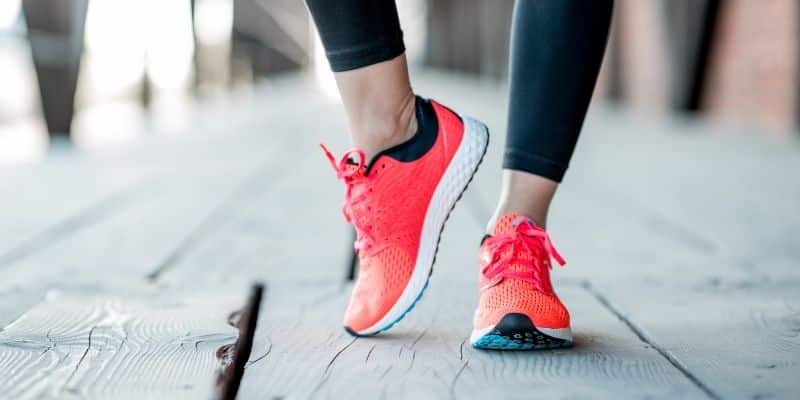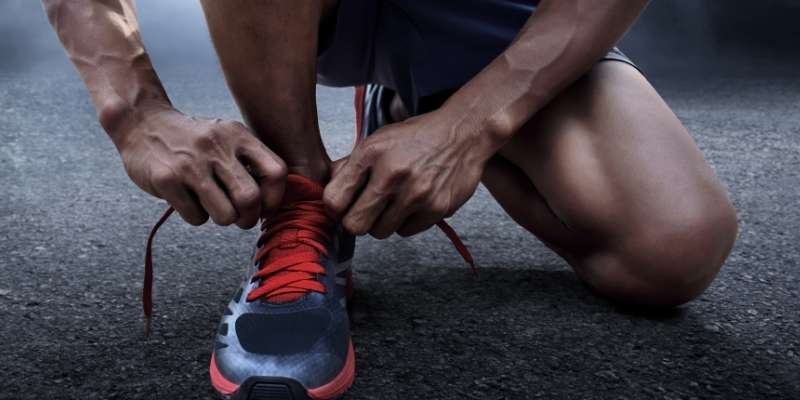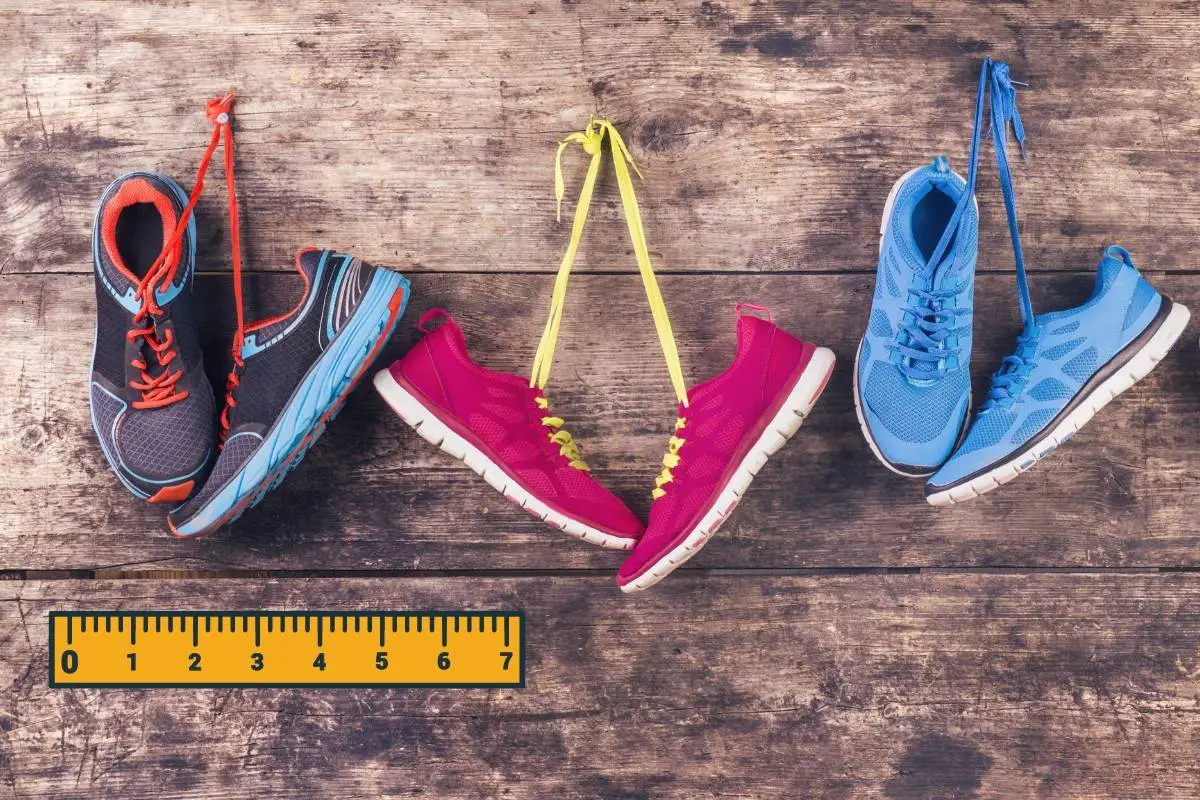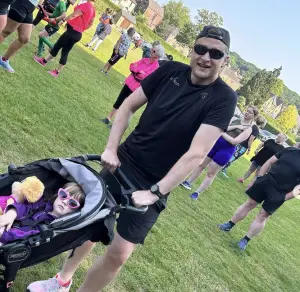I’ve tried my fair share of running shoes over the years. The type of running shoes you wear, whether you plan on walking or actually running, can have a significant impact on your exercise. Not only do they have to provide the right type of cushion for your feet, but they also need to be the right size and have the optimal fit when tied. With that said, is it better for running shoes to fit tight or loose?
It is better for running shoes to have a secure fit around the heel and midfoot than a loose one. The looser the shoe, the more likely an injury can occur. However, our foot volume increases during running so allow for this when sizing.
It’s worth noting that you don’t want to have the shoes on so tight your feet begin to lose circulation. However, you don’t want the shoes so loose that they slip off or move around while you run, either. Finding the right balance can be challenging, but ultimately, how your running shoe should fit will depend on your preference and comfort levels.
Should Running Shoes Be Tight or Loose?
According to experts, having a running shoe tight in the heels and midfoot while providing some room near the toes is the best fit. The main reasoning behind this is two-fold:
- Running shoes with a tighter heel and midfoot prevent slippage while on the move. The midfoot and the heel are the two more troublesome areas for injuries to occur if the areas are not tight.
- Looseness near the toes is necessary because of the potential for injury to the toes if there is no room. Also, having a breathable toe area is essential for air circulation inside the shoe, which can have an adverse effect if there is little to no airflow.
It’s also worth considering if your running shoes are too big; check out my other article on this topic here.
Consider how much running you plan to do.
According to research, our feet swell and enlarge slightly when running so make sure that any running shoes have some additional capacity when trying them on. I found that going a size larger helped massively with comfort during longer runs, especially races.

How to Find the Right Fit in Running Shoes
If you’re looking for a new pair of running shoes or are unsure whether the current pair you own have the fit you need, there are a few things you’ll need to do.
Measure Your Foot Size
First, you’ll have to measure your foot size, both in length and width; this can be a huge time saver once you start shopping for a new pair of running shoes. Running Warehouse has a great chart to help you find your ideal measurements.
Here are a few things you should keep in mind as you measure your feet to get a more accurate shoe size and fit:
- Your running shoes are generally going to be a half-size smaller than your casual shoes.
- Pregnancy can increase both the length and the width of a woman’s foot.
- Your feet can grow two shoe sizes in one calendar year depending on your age, so continually measure throughout the year.
- Most people differ in size between the left and right foot (the difference is small enough that most don’t notice it), so make sure you measure both feet.
Measuring Foot Length
The length of your foot should be measured from the heel up to the tip of the toes. While most shoe stores have some measuring device or chart, you can also use a regular ruler or tape measure (unisex and men’s shoe sizes in the US are in inches; women can use this chart to convert a measurement in inches to the appropriate shoe size).
Once you find the correct measurement for your foot’s length, be sure to account for a little wiggle room ahead of the toes. You do not want the shoes so small or tight that your toes are crushed against the tip of the shoe because that can lead to blisters and other injuries/discomfort while running.
Measuring Foot Width
For the width of your foot, be sure to find the widest part of your foot and measure that. For most people, that would be where the toes meet the main foot area. While most shoes do not have a specific measurement for this particular area in their shoes, if the foot is wider than normal, that person might want to shop for “Wide” running shoes instead of standard or slim-fitting shoes.
Because people almost always wear socks when wearing running shoes, remember to wear socks that you would wear while running when measuring and trying on shoes. Your socks can influence your final shoe size, depending on how thick they are.
Try the Running Shoes On
For proper running shoe fit, the shoes will feel snug in and around the heel and the midfoot, with a little room near the toes for breathability. The best way to ensure you have the best fit is to put the shoes on and stand up; this gives you a feel of if the shoes fit in the right areas.
You should also walk around with the shoes on both feet to ensure they do not rub up against your toes or heels. If there is significant space on any side of your foot, then you might want to look for a smaller shoe size.
Check the fit near the toes by taking your thumb and pressing down at the toe area; there should be about half a thumb’s length between the end of the shoe and your toes.

Check How You Lace and Tie Your Running Shoes
Believe it or not, how you usually lace and tie your shoes will affect how they fit on your feet. There are a few ways to lace your shoes to help them fit better:
- Runner’s Loop: This can help if the shoes are a little loose in the heel area. REI has a great instructional video and step-by-step instructions on how to lace your shoes this way.
- Straight Bar Lacing: This is handy if the top of your foot feels too much pressure. Ian’s Shoelace Site is an excellent resource for learning how to lace your shoes with this method.
- Bruised Toe Lacing: This comes in handy if your big toes feel the brunt of the force when running, or are injured. The Reluctant Enthusiast has a couple of variations of this lacing method on their site here.
Which Types of Running Shoes Fit Best?
After following the above tips, you should be able to adjust your shoe so that it fits just right—not too loose and not too tight. However, the key to having a properly fitted running shoe is to have the right brand to begin with. If you want to be using the best-fitted shoes in the market, finding name brands will be the best bet:
- Nike has a wide selection of running shoes; they can offer shoes for any runner’s lifestyle (casual, competitive, etc.). Generally, Nike offers shoes on the tighter side, both in terms of length and width.
- Adidas, like Nike, has a vast selection of running and other athletic shoes. While the shoes are not as flashy as Nike, there will be more of a selection for athletic shoes than pure running shoes. Adidas shoes are pretty much the exact opposite of Nike; they tend to be looser and fit better for people with wider feet.
- A more generalized running brand would be Asics. Because this brand is more known for their running shoes, the shoes’ quantity might not be mighty, but the quality will be there. Asics are the cream of the crop for fit, so finding the best fit in the heel, midfoot, and toes should be easy enough.
- Another to look for would be New Balance. This brand offers running shoes at the lower end of pricing, making it perfect for people just getting interested in running. Although some experienced runners use New Balance, most serious runners will more often opt for one of the previous brands mentioned. New Balance tends to vary in fit from shoe to shoe, so be sure to try on your options before purchasing.
Conclusion
Running is an excellent way for people to get into a healthy habit of exercise; however, you have to have running shoes with the proper fit to avoid discomfort and injury.
Fit is the most important factor to look for when it comes to running shoes over pricing and style. The ideal fit for a running shoe will include it being tight in the heels and midfoot while providing some room near the toes.
RELATED: Do running shoes stretch?
When trying on running shoes, be sure to walk around with them to ensure the fit is suitable before purchasing. Also, be sure to check out different running shoe brands before purchasing; a few more prominent brand names might have the most selections but may not offer the best fit for the price.
References
The effects of walking, running, and shoe size on foot volumetrics


